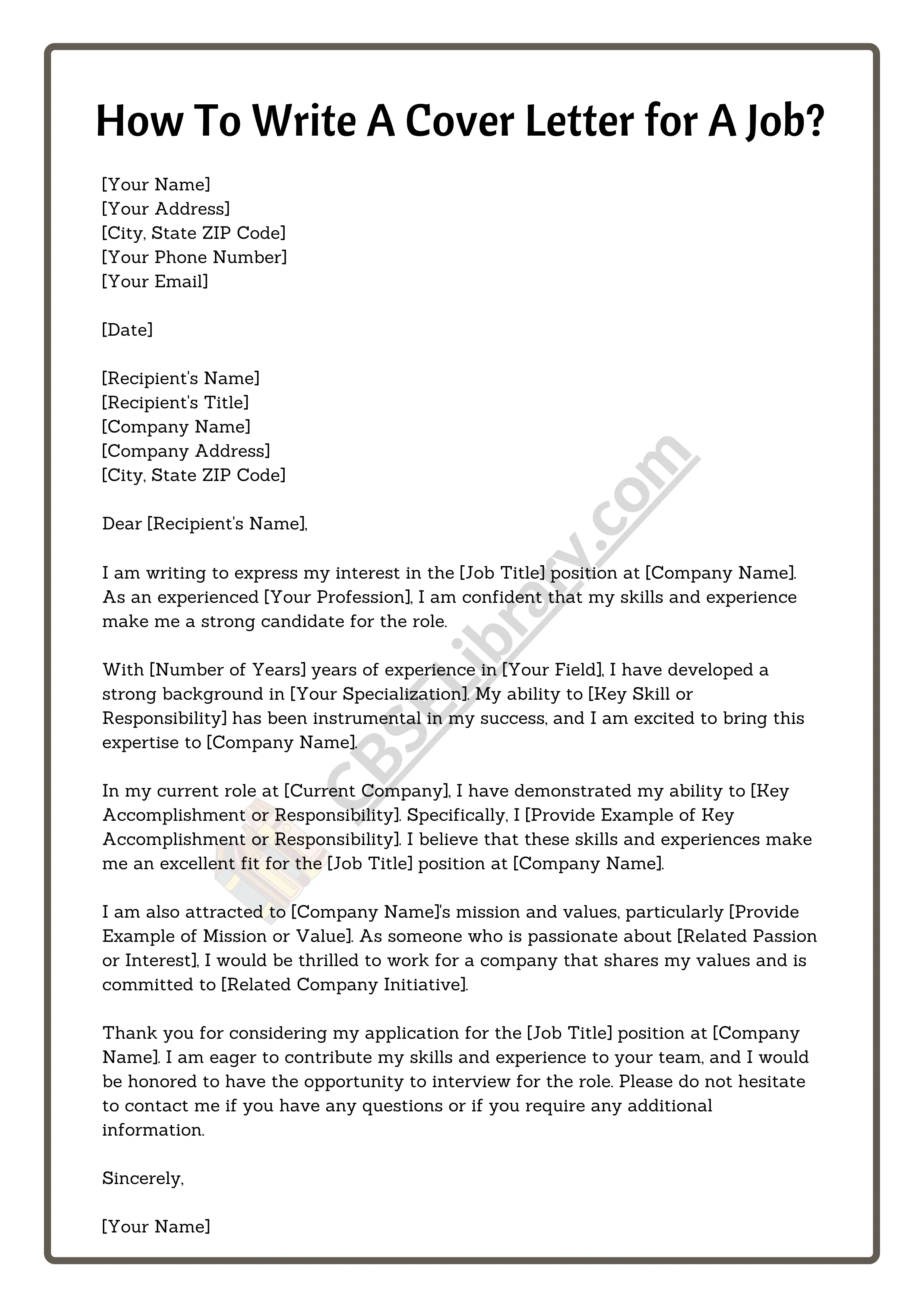What is a Cover Letter
A cover letter is a crucial document that accompanies your resume when you apply for a job. It serves as your first introduction to a potential employer, providing a personalized overview of your qualifications, skills, and enthusiasm for the specific position. Unlike a resume, which is a factual summary of your experience, a cover letter allows you to tell your story, explain your motivations, and highlight why you are the perfect fit for the role and the company. Crafting a compelling cover letter is essential for making a positive first impression and increasing your chances of landing an interview. It’s your opportunity to showcase your personality, demonstrate your writing skills, and convince the hiring manager that you’re worth a closer look.
Why Cover Letters Matter
In today’s competitive job market, cover letters can be the determining factor in whether your application gets noticed. While a resume presents your qualifications in a concise format, a cover letter allows you to elaborate on those qualifications and demonstrate your unique value proposition. Many employers look for candidates who can communicate effectively and understand the job requirements, and a well-written cover letter is a testament to both. It shows that you’ve taken the time to research the company and the role, and that you’re genuinely interested in the opportunity. A strong cover letter can help you stand out from other applicants, especially if you have any gaps in your resume or are changing careers.
The Purpose of a Cover Letter
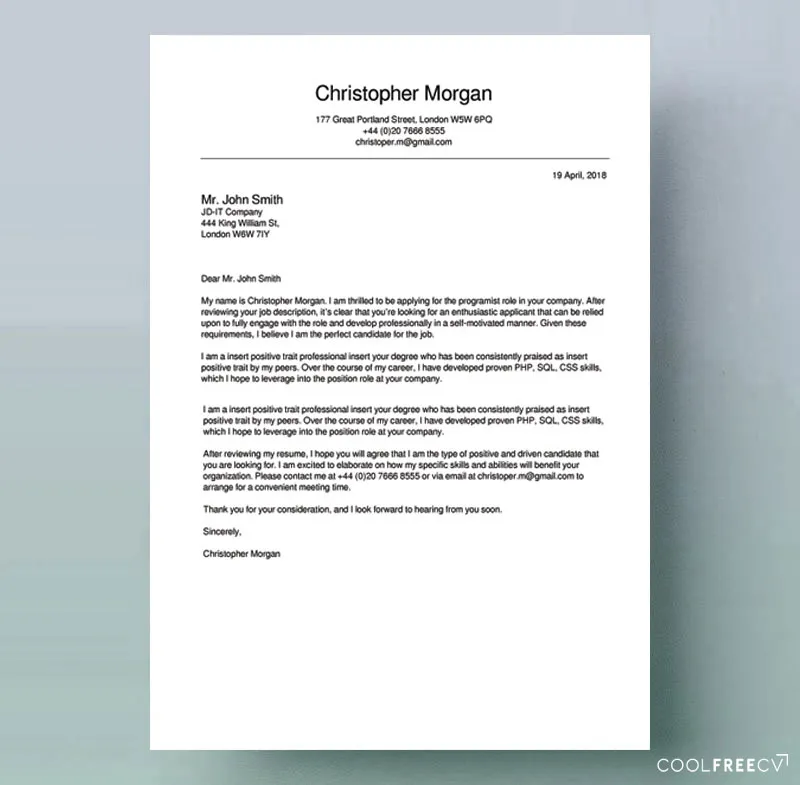
The primary purpose of a cover letter is to introduce yourself to the hiring manager and express your interest in the job. It’s your opportunity to explain why you are interested in the specific position and company. It showcases your understanding of the role and the company’s needs and how you can meet those needs. It provides a brief overview of your relevant skills and experiences, highlighting how they align with the job requirements. The cover letter aims to persuade the employer to read your resume and consider you for an interview. Ultimately, the goal is to convince the hiring manager that you’re a strong candidate and that you deserve the chance to discuss your qualifications further.
Cover Letter Structure
A well-structured cover letter is easy to read and makes a positive impression on the hiring manager. It typically follows a standard format that includes a header, greeting, body paragraphs, and a closing. Adhering to this structure will help you organize your thoughts and present your qualifications effectively. Each section of the cover letter should serve a specific purpose, from introducing yourself to highlighting your skills and enthusiasm for the role. A clear and concise structure is crucial for keeping the hiring manager engaged and ensuring your key messages are effectively communicated.
Header
The header of your cover letter should include your contact information, such as your name, address, phone number, and email address. It’s important to use a professional email address. The header should be placed at the top of the letter and should be formatted in a clear and easy-to-read manner. Also, include the date and the hiring manager’s name and title, if known, along with the company’s name and address. This is an important detail showing that you have researched the company and are addressing the letter to the correct person, which demonstrates your attention to detail.
Greeting

The greeting is how you address the hiring manager. A formal greeting, such as “Dear Mr./Ms. [Last Name],” is always a good idea, especially if you know the name of the person reviewing your application. If you don’t know the hiring manager’s name, you can use a general greeting, such as “Dear Hiring Manager” or “Dear [Company Name] Team.” Avoid generic greetings like “To Whom It May Concern,” as they can make your letter seem impersonal. If the job posting specifies a contact person, be sure to address your letter to that individual to show you pay attention to detail.
Body Paragraph 1 Highlight Your Value
The first body paragraph should state the position you are applying for and where you found the job posting. Also, express your enthusiasm for the role and the company. This paragraph should also briefly introduce your key qualifications, highlighting how your skills and experience align with the job requirements. Mention your understanding of the company’s mission, values, and products/services. Make sure you briefly mention something that makes you uniquely qualified for the position. This demonstrates that you’ve researched the company and the role.
Body Paragraph 2 Connect Skills
In this paragraph, delve deeper into your qualifications. Focus on 2–3 of the most important skills and experiences that make you a strong candidate for the role. Use specific examples to illustrate your abilities and quantify your accomplishments whenever possible. For example, instead of saying you “managed projects,” you could say you “managed a team of 5 developers to deliver 3 projects on time and under budget.” Connect your skills to the requirements listed in the job description to demonstrate that you understand what the employer is looking for. Show the employer how you can solve their problems and contribute to their goals by using the STAR method (Situation, Task, Action, Result) to showcase your experience.
Body Paragraph 3 Show Enthusiasm

In your final body paragraph, emphasize your enthusiasm for the role and the company. Explain why you are excited about this particular opportunity and how it aligns with your career goals. Mention specific aspects of the company or the role that appeal to you. Avoid generic statements and tailor your comments to demonstrate your genuine interest. Express your confidence in your ability to contribute to the company’s success. Conclude the body by reiterating your interest and the value you would bring to the role and the company.
Closing Paragraph
Your closing paragraph should thank the hiring manager for their time and consideration. Reiterate your interest in the position and express your eagerness to discuss your qualifications in an interview. Include a call to action, such as stating that you look forward to hearing from them soon. End with a professional closing, such as “Sincerely,” “Best regards,” or “Respectfully,” followed by your typed name. Make sure to proofread the closing for any typos or errors before submitting your application.
Formatting and Style
The formatting and style of your cover letter are just as important as the content. A well-formatted and visually appealing letter is easier to read and more likely to leave a positive impression. Proper formatting demonstrates professionalism and attention to detail, while the style of your writing reveals your personality and how you communicate. Be sure that your cover letter looks clean, readable, and professional.
Font and Layout
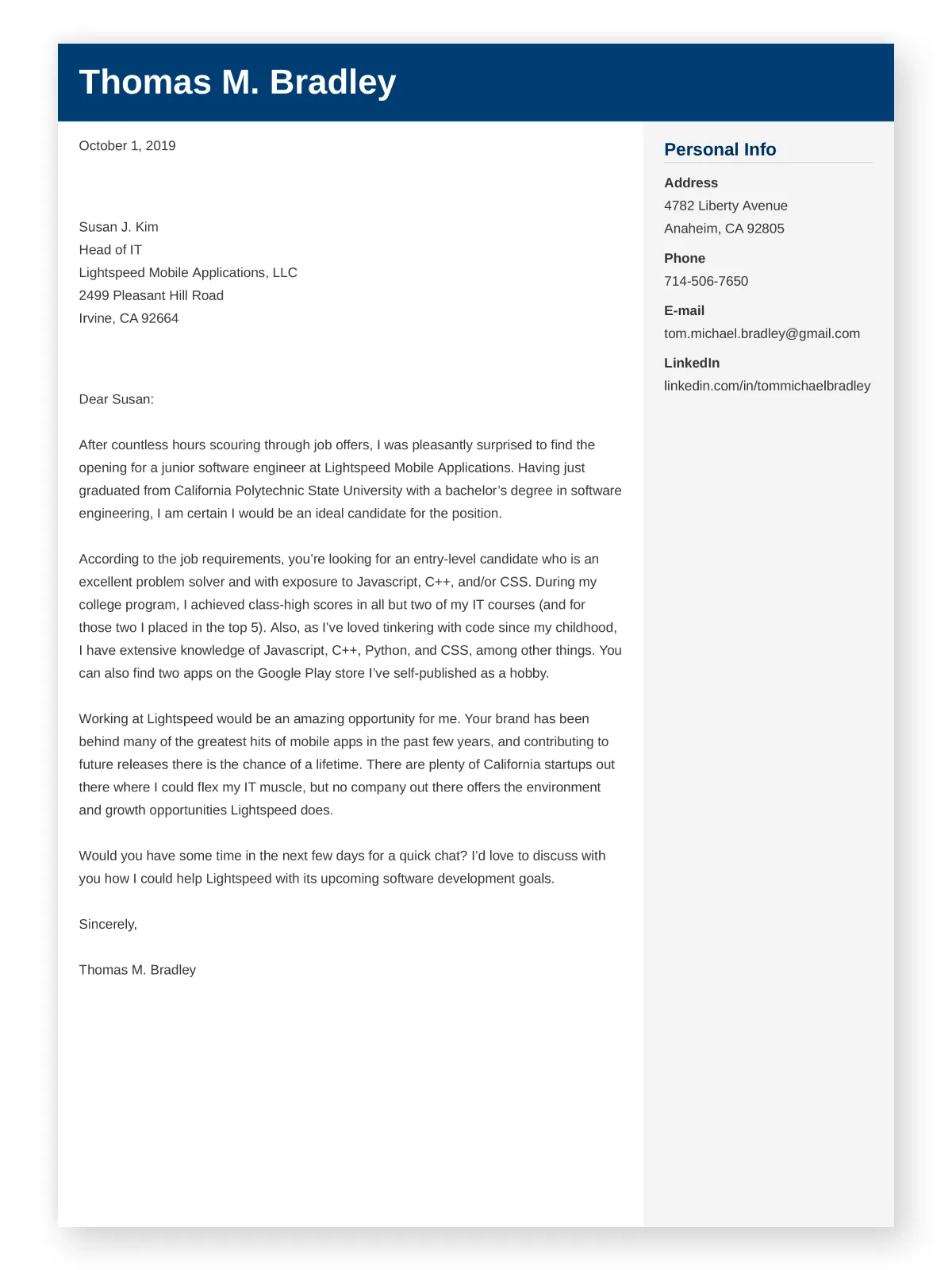
Use a professional and easy-to-read font, such as Arial, Times New Roman, or Calibri, in a size between 10 and 12 points. Keep your letter to one page, using standard margins (1 inch on all sides) and single-spacing. Use a clear and consistent layout, with well-defined paragraphs and ample white space. Avoid excessive use of bolding, italics, or underlining, as this can make your letter look cluttered. Ensure that your letter is visually appealing and easy for the reader to follow.
Tone and Language
Maintain a professional and enthusiastic tone throughout your cover letter. Use clear, concise, and active language. Avoid jargon, clichés, and overly formal language. Tailor your language to the company’s culture and the nature of the role. Proofread your letter carefully for any grammatical errors or typos. Use strong action verbs to describe your accomplishments and skills. Show personality and let your enthusiasm for the opportunity shine through in your tone.
Proofreading and Editing
Proofreading and editing are critical steps to ensure your cover letter is polished and error-free. Errors, such as typos or grammatical mistakes, can make your letter look unprofessional. Always proofread your letter carefully after you finish writing it. Use a grammar checker, but don’t rely on it. Read your letter aloud to catch any awkward phrasing. Ask a friend or family member to review your letter for any errors you might have missed. Make sure your letter is free from any mistakes before you submit your application.
Cover Letter Examples
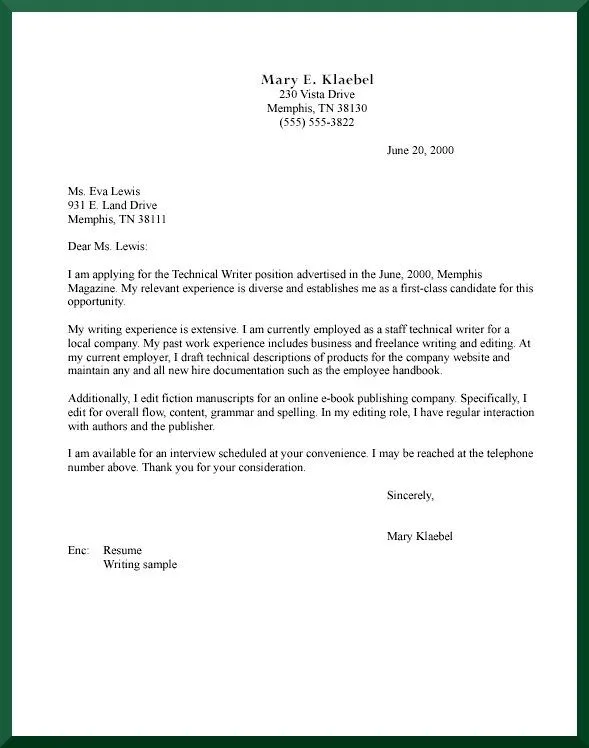
Reviewing cover letter examples can help you understand how to structure your letter and tailor your content to different situations. It’s essential to customize your cover letter for each job application. You can see how professionals address the needs of different roles and showcase their unique value propositions. Look at examples and tailor them to your situation.
Example 1 Recent Graduate
A cover letter for a recent graduate should focus on the applicant’s education, relevant coursework, internships, and any other experience. The letter should highlight any skills developed during their studies and how they relate to the job requirements. The candidate should demonstrate a willingness to learn, enthusiasm, and an eagerness to contribute. Make sure to mention any projects that are related to the job you are applying for. The recent graduate must show that they have the skills and ability to be a professional in the role.
Example 2 Career Changer
A cover letter for a career changer should focus on the transferable skills from their previous role. This is an important detail to let the employer know the applicant’s experience. It should explain the applicant’s reasons for the career change and show their enthusiasm for the new field. The letter should emphasize any relevant experience and demonstrate that they possess the skills needed for the new role. Highlight any training, certifications, or other qualifications that support their career change. Ensure that the cover letter demonstrates the ability to adapt to a new role.
Example 3 Experienced Professional
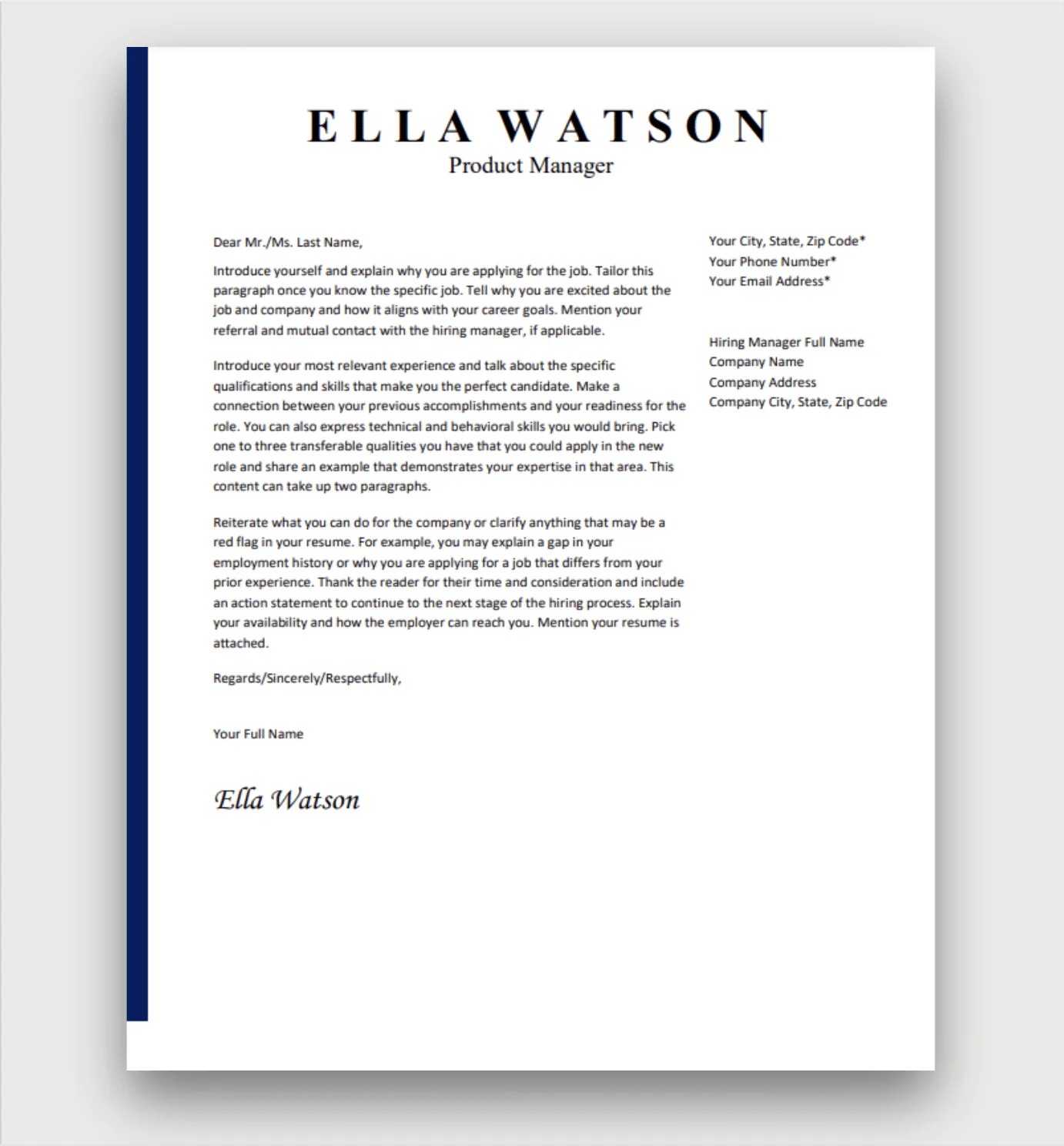
A cover letter for an experienced professional should highlight their accomplishments and quantifiable results. The letter should focus on how their skills and experience can benefit the company. The candidate should emphasize their leadership abilities, their ability to manage teams, and any significant projects or initiatives. Highlight the measurable impact of your work and provide data to support your claims. Emphasize your strengths and successes. Show the employer what the company can gain from hiring you, and focus on what you can do to improve the company.
Common Cover Letter Mistakes
Avoid these common mistakes to ensure your cover letter is effective and professional. By knowing the mistakes, you will be better prepared to create the best cover letter for the job.
Generic Content
One of the most common mistakes is using a generic cover letter that is not tailored to the specific job and company. This makes the letter seem impersonal and shows that you haven’t taken the time to research the role or the company. The cover letter is not effective unless it is customized to the job that you are applying for. Be sure to do your research and customize your letter for each application.
Typos and Grammatical Errors
Typos and grammatical errors can undermine your credibility and make a negative impression on the hiring manager. These errors show a lack of attention to detail. Proofread your letter carefully and use a grammar checker to catch any mistakes. The cover letter is the first thing the employer will see, so it must be free of errors.
Failing to Tailor
Another mistake is failing to tailor your letter to the specific job requirements. The cover letter must address the job posting and explain how your skills and experience align with the needs of the role. Avoid generic statements and focus on the specific skills and qualifications that the employer is seeking. Take the time to carefully review the job description and customize your cover letter to match the listed requirements.
Cover Letter Checklist
Use a checklist to make sure your cover letter is complete and polished before submitting your application. Reviewing the checklist will increase the chances of getting the job.
Final Review
Before submitting your cover letter, conduct a final review to ensure that it is free of errors and that it meets the required standards. Ensure that your letter is free from typos or grammatical errors. Check the formatting and make sure it’s clean and professional. Confirm that you have tailored your letter to the specific job requirements. Make sure your contact information is correct.
Submitting Your Cover Letter
Follow the application instructions provided in the job posting to submit your cover letter and resume. Ensure that you have saved your documents in the specified format (such as PDF). Proofread your cover letter one last time before submitting it. Double-check that you are sending your cover letter and resume to the correct contact person. The more details you get right, the better the chance of getting the job.
